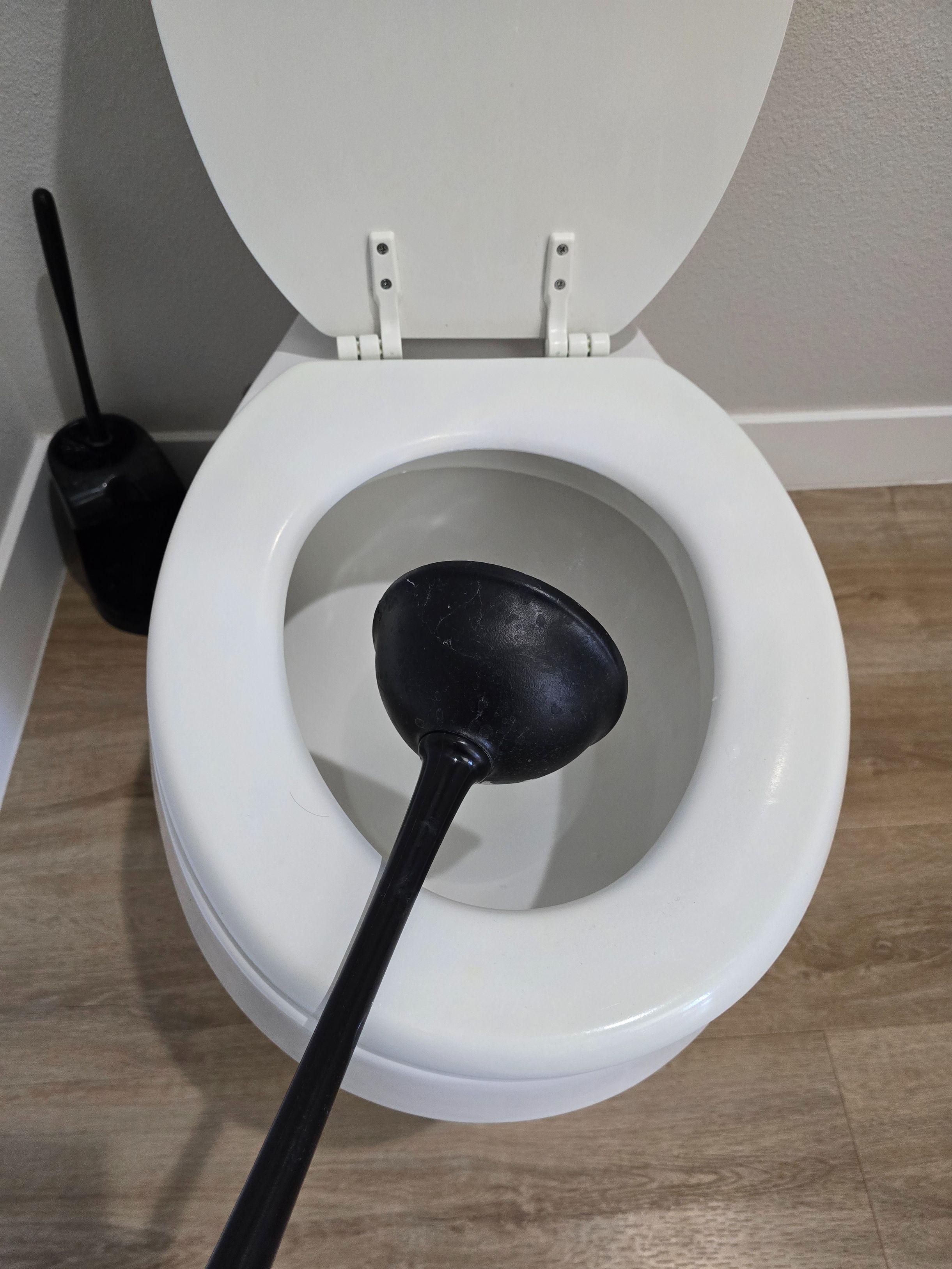Choosing The Right Plunger for The Right Job

As a homeowner, knowing the right plunger for the job can save you time, frustration, and potentially costly plumbing bills. This guide will explore the various types of plungers and their specific uses.
- The Classic Cup Plunger
Most homeowners are familiar with this type, but its proper use is often misunderstood:
- According to a survey by the National Association of Home Builders, 95% of households own a cup plunger.
- A study in the Journal of Environmental Health found that using a cup plunger incorrectly can push clogs further down the pipe in 30% of cases.
Best for: Flat-surface drains like sinks and bathtubs.
Proper technique: Ensure a proper seal and use quick, forceful plunges.
- The Flange Plunger (Toilet Plunger)
Designed specifically for toilets, but often confused with cup plungers:
- A survey by a leading plumbing manufacturer found that 40% of homeowners use the wrong type of plunger for toilet clogs.
- Research published in the Journal of Water and Health found that using a flange plunger can reduce bacterial splashing by up to 70% compared to a cup plunger when used on toilets.
Best for: Toilets and drains with curved surfaces.
Proper technique: Insert the flange into the toilet bowl opening for a tight seal.
- The Accordion Plunger
Less common but highly effective for certain clogs:
- According to plumbing industry reports, accordion plungers are used in less than 10% of households.
- A study in the International Journal of Engineering Research and Applications found that accordion plungers can generate up to 2 times more force than standard cup plungers.
Best for: Stubborn toilet clogs.
Proper technique: Requires more strength to use; ensure a good seal before plunging.
- The Taze Plunger
A specialized tool often overlooked by homeowners:
- Plumbing industry surveys indicate that less than 5% of homeowners own a taze plunger.
- Research in the Journal of Plumbing Engineering found that taze plungers can clear up to 90% of sink clogs that resist standard plungers.
Best for: Kitchen sinks with a garbage disposal.
Proper technique: Insert into the drain and twist while plunging.
- The Automatic Plunger
A modern solution gaining popularity:
- Market research shows a 30% increase in automatic plunger sales over the past five years.
- A study in the journal Building Services Engineering Research and Technology found that automatic plungers can reduce the physical strain on users by up to 60% compared to manual plunging.
Best for: Users with limited hand strength or mobility issues.
Proper technique: Follow manufacturer instructions for optimal use.
- The Beehive Plunger
A versatile option for various drain types:
- Plumbing supply data indicates that beehive plungers account for about 15% of plunger sales.
- Research in the Journal of Construction Engineering found that beehive plungers are 25% more effective on bathtub drains compared to standard cup plungers.
Best for: Bathtubs, showers, and large sink drains.
Proper technique: Use a rocking motion to create suction and pressure.
When to Use Each Type:
- Cup Plunger: For minor clogs in sinks and tubs with flat surfaces.
- Flange Plunger: Specifically for toilet clogs and drains with curved openings.
- Accordion Plunger: For severe toilet clogs that resist standard plungers.
- Taze Plunger: Ideal for kitchen sinks, especially those with a garbage disposal.
- Automatic Plunger: For users who need assistance or for stubborn clogs.
- Beehive Plunger: Versatile option for various drain types, especially effective on bathtubs.
Tips for Effective Plunging:
- Ensure enough water covers the plunger head for a proper seal.
- Use petroleum jelly on the rim of cup plungers to improve the seal.
- Plunge in a straight up and down motion to avoid breaking the seal.
- For sinks with overflow holes, cover them with a damp cloth to increase suction.
When to Call a Professional:
While plungers can resolve many clogs, some situations require expert intervention:
- If plunging doesn't resolve the issue after several attempts.
- When you suspect a more serious blockage deeper in the plumbing system.
- If you hear gurgling sounds in other drains when plunging.
- For recurring clogs that might indicate a larger plumbing problem.
Expert Assistance:
For clogs that resist DIY efforts or if you're unsure about the right approach, professional help can be invaluable. Copperfield Plumbing offers expert drain cleaning services, utilizing advanced techniques and equipment to resolve even the most stubborn clogs. Our experienced technicians can also provide guidance on proper plunger use and preventive maintenance to avoid future issues.
Conclusion:
Understanding the various types of plungers and their proper use can empower homeowners to tackle many common plumbing issues. By choosing the right tool and technique for each situation, you can often resolve clogs quickly and effectively, potentially saving on professional plumbing costs.
Remember, while plungers are effective for many clogs, persistent or complex issues may require professional assessment to ensure your plumbing system's long-term health and functionality.